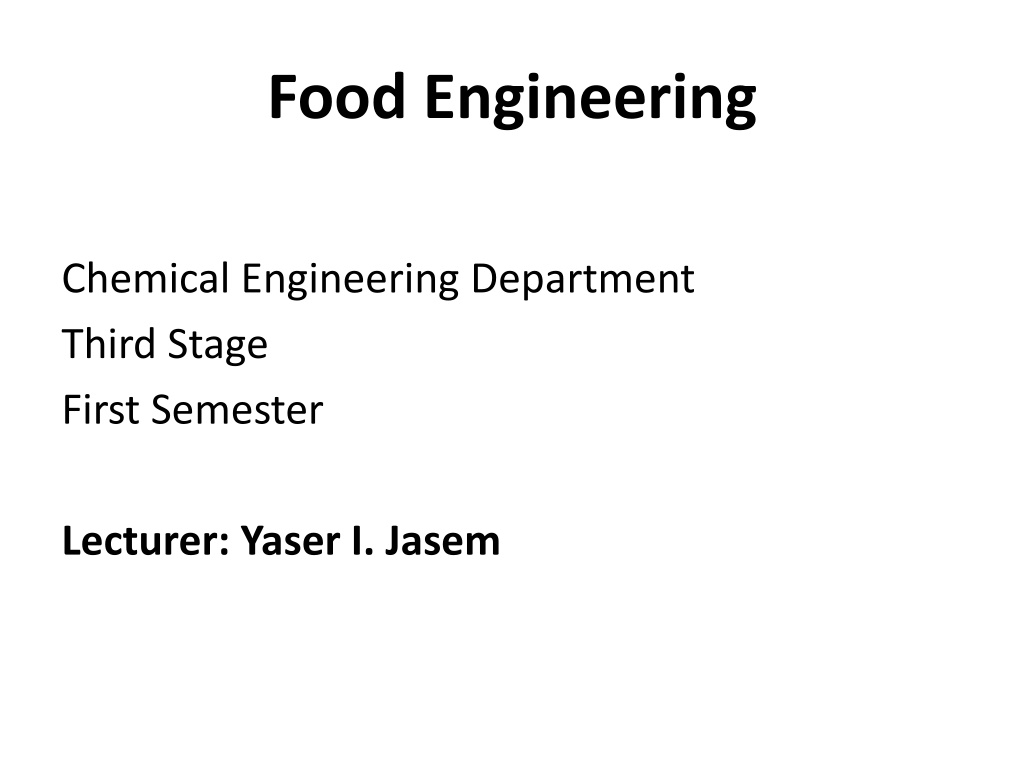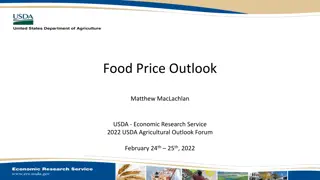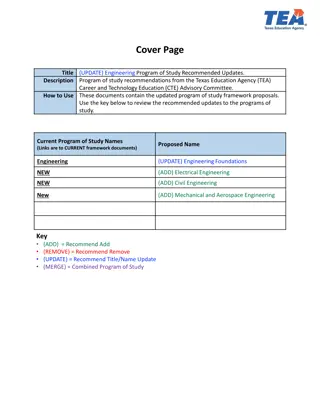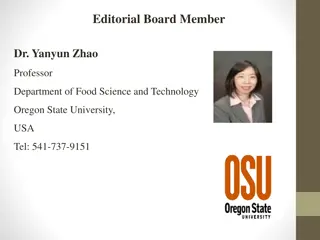Food Engineering
Food engineering is a multidisciplinary field combining microbiology, physical sciences, chemistry, and engineering to ensure the production, preservation, and distribution of safe, nutritious, and diverse food products. The industry aims to extend shelf life, enhance sensory qualities, provide essential nutrients, and address global challenges such as population growth, food sustainability, and nutrition-related health issues. The future of food engineering holds the key to overcoming hunger, malnutrition, and obesity while catering to the needs of a growing global population by implementing innovative solutions.
Download Presentation

Please find below an Image/Link to download the presentation.
The content on the website is provided AS IS for your information and personal use only. It may not be sold, licensed, or shared on other websites without obtaining consent from the author.If you encounter any issues during the download, it is possible that the publisher has removed the file from their server.
You are allowed to download the files provided on this website for personal or commercial use, subject to the condition that they are used lawfully. All files are the property of their respective owners.
The content on the website is provided AS IS for your information and personal use only. It may not be sold, licensed, or shared on other websites without obtaining consent from the author.
E N D
Presentation Transcript
Food Engineering Chemical Engineering Department Third Stage First Semester Lecturer: Yaser I. Jasem
Food Engineering 1. Introduction Food engineering is a multidisciplinary field which combines microbiology, applied physical sciences, chemistry and engineering for food and related industries. Food engineering includes, but is not limited to, the application of agricultural engineering, mechanical engineering and chemical engineering principles to food materials.
Introduction Food engineers provide the technological knowledge transfer essential to the cost- effective production and commercialization of food products and services. Physics, chemistry, and mathematics are fundamental to understanding and engineering products and operations in the food industry.
The aims of the food industry To extend the period during which a food remains wholesome (the shelf life) by preservation techniques which inhibit microbiological or biochemical changes and thus allow time for distribution, sales and home storage.
The aims of the food industry To increase variety in the diet by providing a range of attractive flavours, colours, aromas and textures in food (collectively known as eating quality, sensory characteristics or organoleptic quality).
The aims of the food industry To provide the nutrients required for health (termed nutritional quality of a food). To generate income for the manufacturing company.
The Future of Food Engineering Many of the most salient challenges facing our world are related to food. For example, how to sustain a global population of 9.6 billion in 2050 when faced with the prospect that we will need to 69% more food calories than we did in 2006.
The Future of Food Engineering In conjunction to preventing hunger and malnutrition, we must also tackle the problems of the global obesity and its associated health risks.
The Future of Food Engineering To address these challenges, food engineering in the future will have to contribute to advancing the health and function of processed food products, to improving the sustainability of food manufacturing and distribution, and to the spreading of food engineering knowledge, innovation, and best practice, especially to the developing world.
The Future of Food Engineering The future food industry will need to meet increasing demands forspecific consumer groups consumers with allergy food for elderly high performance products for athletes and food to prevent and treat obesity.
The Future of Food Engineering A growing challenge to future food manufacturing and distribution is sustainability. Food engineers should contribute to improving sustainability in several ways, ranging from the basic concepts of mass and energy balances that include environmental impact factors to smarter process design that allows for the better utilization of waste streams, energy recovery, and water recycling.























